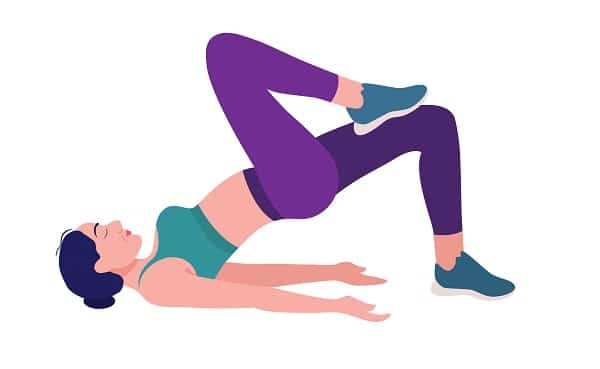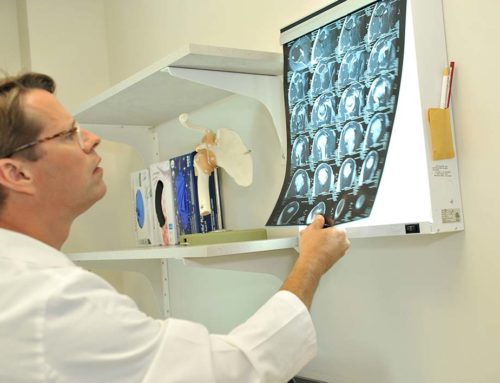Contributed by Janice Hirsch, Cary Orthopaedics Physical Therapist Assistant
Oh, to be young again! We hear that often from our mature adult population, many of whom suffer from low back pain. But is that statement really accurate?
As a physical therapy assistant at the Cary Orthopaedics Spine Center, I work with patients of all ages. From teenagers to active older seniors, low back problems are common. It often comes down to the basics: A weak back is the result of very little core strength. Learn how you can strengthen your core to reduce lower back pain.
Importance of core strength
Core muscles include the abdominals, back, hips, buttocks and pelvic muscles. Core strength provides support to the lower back, provides better posture and helps with balance. Without it, you have increased fall risks and lower back pain. According to the Journal of Physical Therapy Science, core strength training is more effective than resistance training for alleviating chronic low back pain.
Strong back muscles can increase spine stability, but strong abdominal muscles do just as much to support the spine. By increasing internal pressure, much like a weightlifting belt or a lumbar support brace, a strong core reduces the load on the spinal discs.
Core strengthening is important for a healthy back because core muscles are responsible for spinal stability. These muscles carry the weight of your body and must respond to stresses such as bending, lifting and rotating.
Poor posture, such as hunching while standing or sitting for long periods of time, will decrease core strength. This position of rounded shoulders, forward head and flexed hips increases the demand on the low back. This demand may cause a flattening of the back hence a loss of a lordotic curve. Over time, improper posture and poor lifting mechanics increase your risk of disc damage, pinched nerves and other chronic back issues.
Core strength is also vital for balance. The muscles in your core help with your center of gravity, which is how you balance yourself. If the inner core muscles attached to the spine become weak, you are at risk for falls.
There are three structures that assist your body to maintain balance. These structures are vestibular, visual and proprioception. To stay balanced correctly, all three must be stable and in equilibrium.
The inner and outer core muscles work together to rotate your body when performing everyday activities. Core weakness can affect balance and make you feel unsteady, as if you are going to fall.
How to increase core strength to reduce low back pain
Regardless of your age, the benefits of a strong core will help you now and in the future. Exercise helps to build the inner and outer core strength needed for stability and good posture. Therefore, finding the correct core workout for you is important. Try these core exercises for low back pain that will help build strength in your core:
Pelvic tilts
Lie on your back and tighten your abdominal muscles against the floor while slightly bending the pelvis upward. Hold for 10 seconds and repeat.
Supine march with pelvic tilt
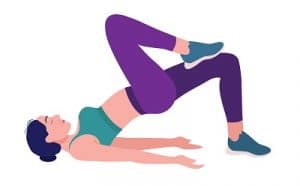
Use the same position as the pelvic tilt, but lift one foot off the ground while engaging your abdominals and bringing your knee toward your chest. Alternate legs.
Transversus abdominis contraction
While on your back, bend your knees with your feet flat on the floor. Focus on contracting the muscles below your navel by pulling your abdominals toward the floor.
Heel slides with transversus abdominis contraction
Use the same position as above, but while keeping your core engaged, slowly slide out one leg and pull it back in. Alternate legs.
Dead bug
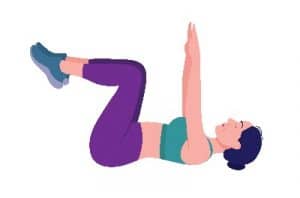
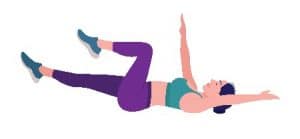
On your back, lift your arms up perpendicular to your shoulders and bring your knees up to a 90-degree angle. Slowly extend and straighten your left leg to the floor while dropping your right arm. Alternate sides.
Modified dead bug
Modify the dead bug by limiting your range of motion to what is comfortable, even if you cannot touch the floor.
Bird dogs
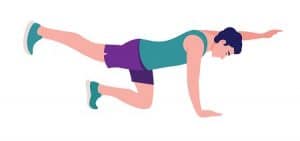
Begin on all fours in a tabletop position with your hands under your shoulders and knees under your hips. Extend your left leg back and right arm forward slowly while contracting your abdominal muscles to maintain a neutral spine. Alternate sides.
Planks
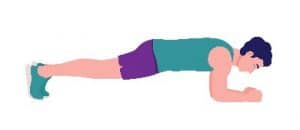
Lie on your stomach with your forearms flat against the floor and your legs straight out behind you. Tuck your toes under and lift your body from the ground. Use your abdominal muscles to hold your body in a straight line. Hold the position for 20 seconds and work up to more extended periods.
Side plank
Lie on one side with your legs in a straight line. With your elbow under your shoulder and forearm pressed to the floor, lift your body up and hold. For more resistance, straighten your arm before lifting your body. To modify this exercise, stack one leg on top of the other.
Read our article 7 Exercises for a Healthy Spine for more core exercises.
Physical therapy is a great way to start your core strengthening program to address low back pain. By increasing your core strength, your back will be happy, and you might even feel young again.
Physical therapy in the Triangle
Cary Orthopaedics Spine Center is the area’s only comprehensive spine practice. If you suffer from back pain, you may benefit from physical therapy to increase your core strength. Our physical therapists can create a personalized treatment plan for you. Contact us today for a consultation.

